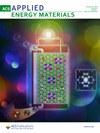Fate and effects of an environmentally relevant mixture of microplastics in simple freshwater microcosms
IF 5.4
3区 材料科学
Q2 CHEMISTRY, PHYSICAL
引用次数: 0
Abstract
Most studies assessing the effects of microplastics (MPs) on freshwater ecosystems use reference materials of a certain size, shape, and polymer type. However, in the environment, aquatic organisms are exposed to a mixture of different polymers with different sizes and shapes, resulting in different bioaccessible fractions and effects. This study assesses the fate and effects of an environmentally relevant mixture of high-density polyethylene (HDPE) fragments, polypropylene (PP) fragments, and polyester (PES) fibres in indoor freshwater microcosms over 28 days. The MP mixture contained common polymers found in freshwater ecosystems, had a size range between 50 and 3887 µm, and was artificially aged using a mercury lamp. The invertebrate species included in the microcosms, Lymnea stagnalis (snail) and Lumbriculus variegatus (worm), were exposed to four MP concentrations: 0.01, 0.05, 0.1 and 1 % of sediment dry weight. MPs fate was assessed by performing a balance of the MPs in the surface water, water column, and sediment after a stabilization period and at the end of the experiment. Sedimentation rates per day were calculated (2.13 % for PES, 1.46 % for HDPE, 1.87 % for PP). The maximum size of MPs taken up by the two species was determined and compared to the added mixture and their mouth size. The size range taken up by L. variegatus was smaller than L. stagnalis and significantly different from the size range in the added mixture. The No Observed Effect Concentrations (NOECs) for the reproduction factor of L. variegatus and the number of egg clutches produced by L. stagnalis were 0.01 % and 0.1 % sediment dry weight, respectively. The EC10 and EC50 for the same endpoint for L. stagnalis were 0.25 % and 0.52 %, respectively. This study shows that current MP exposure levels in freshwater sediments can result in sub-lethal effects on aquatic organisms, highlighting the importance of testing MP mixtures.
与环境相关的微塑料混合物在简单淡水微生态系统中的命运和影响
大多数评估微塑料(MPs)对淡水生态系统影响的研究都使用具有一定尺寸、形状和聚合物类型的参考材料。然而,在环境中,水生生物会接触到不同尺寸和形状的聚合物混合物,从而产生不同的生物可及部分和影响。本研究评估了与环境相关的高密度聚乙烯(HDPE)碎片、聚丙烯(PP)碎片和聚酯(PES)纤维混合物在室内淡水微生态系统中 28 天的转归和影响。MP 混合物包含淡水生态系统中常见的聚合物,尺寸范围在 50 到 3887 µm 之间,并使用汞灯进行人工老化。微生态系统中的无脊椎动物物种 Lymnea stagnalis(蜗牛)和 Lumbriculus variegatus(蠕虫)暴露在四种 MP 浓度下:分别为沉积物干重的 0.01%、0.05%、0.1% 和 1%。在稳定期后和实验结束时,通过平衡表层水、水体和沉积物中的 MPs 来评估 MPs 的去向。计算出了每天的沉积率(聚醚砜为 2.13%,高密度聚乙烯为 1.46%,聚丙烯为 1.87%)。测定了两种生物所吸收的 MPs 的最大尺寸,并将其与添加的混合物及其口腔尺寸进行了比较。L. variegatus 摄取的尺寸范围小于 L. stagnalis,与添加混合物中的尺寸范围有显著差异。变色龙的繁殖系数和滞留龙的产卵数的无观测效应浓度(NOECs)分别为 0.01 % 和 0.1 % 泥沙干重。在相同的终点,滞留蛙的 EC10 和 EC50 分别为 0.25 % 和 0.52 %。这项研究表明,目前淡水沉积物中的 MP 暴露水平会对水生生物造成亚致死效应,这突出了对 MP 混合物进行测试的重要性。
本文章由计算机程序翻译,如有差异,请以英文原文为准。
求助全文
约1分钟内获得全文
求助全文
来源期刊

ACS Applied Energy Materials
Materials Science-Materials Chemistry
CiteScore
10.30
自引率
6.20%
发文量
1368
期刊介绍:
ACS Applied Energy Materials is an interdisciplinary journal publishing original research covering all aspects of materials, engineering, chemistry, physics and biology relevant to energy conversion and storage. The journal is devoted to reports of new and original experimental and theoretical research of an applied nature that integrate knowledge in the areas of materials, engineering, physics, bioscience, and chemistry into important energy applications.
 求助内容:
求助内容: 应助结果提醒方式:
应助结果提醒方式:


